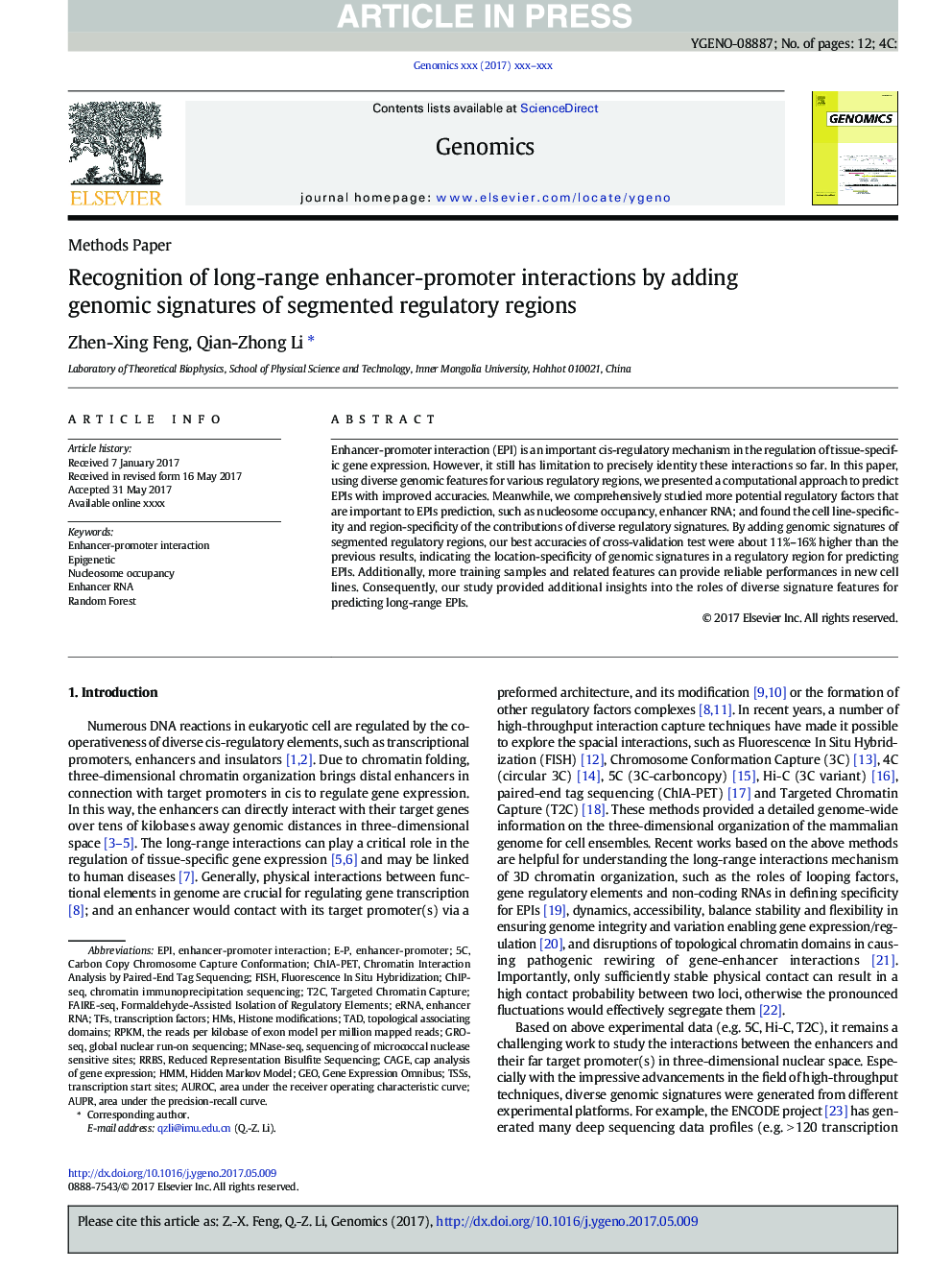| Article ID | Journal | Published Year | Pages | File Type |
|---|---|---|---|---|
| 8646350 | Genomics | 2017 | 12 Pages |
Abstract
Enhancer-promoter interaction (EPI) is an important cis-regulatory mechanism in the regulation of tissue-specific gene expression. However, it still has limitation to precisely identity these interactions so far. In this paper, using diverse genomic features for various regulatory regions, we presented a computational approach to predict EPIs with improved accuracies. Meanwhile, we comprehensively studied more potential regulatory factors that are important to EPIs prediction, such as nucleosome occupancy, enhancer RNA; and found the cell line-specificity and region-specificity of the contributions of diverse regulatory signatures. By adding genomic signatures of segmented regulatory regions, our best accuracies of cross-validation test were about 11%-16% higher than the previous results, indicating the location-specificity of genomic signatures in a regulatory region for predicting EPIs. Additionally, more training samples and related features can provide reliable performances in new cell lines. Consequently, our study provided additional insights into the roles of diverse signature features for predicting long-range EPIs.
Keywords
chromatin interaction analysis by paired-end tag sequencingChIA-PETReduced representation bisulfite sequencingRRBSChIP-SeqGEOFAIRE-seqRPKMHMMHMSTFsEPIAUROCenhancer RNATSSseRNANucleosome occupancyEpigeneticTADcap analysis of gene expressionHistone modificationschromatin immunoprecipitation sequencingformaldehyde-assisted isolation of regulatory elementsRandom foresttranscription start sitesTranscription factorsfluorescence in situ hybridizationcageFisharea under the receiver operating characteristic curveHidden Markov modelGene Expression Omnibus
Related Topics
Life Sciences
Biochemistry, Genetics and Molecular Biology
Genetics
Authors
Zhen-Xing Feng, Qian-Zhong Li,
